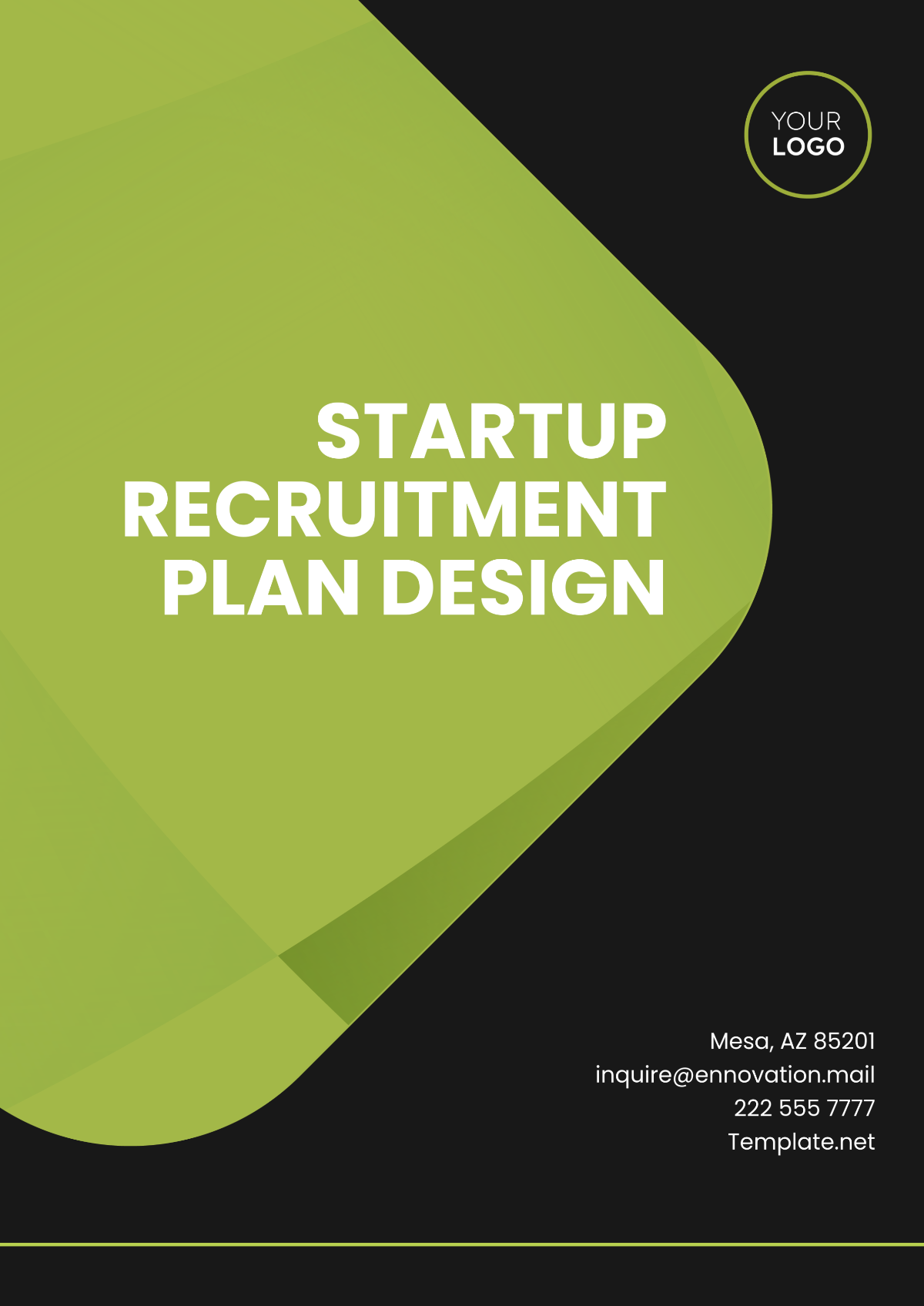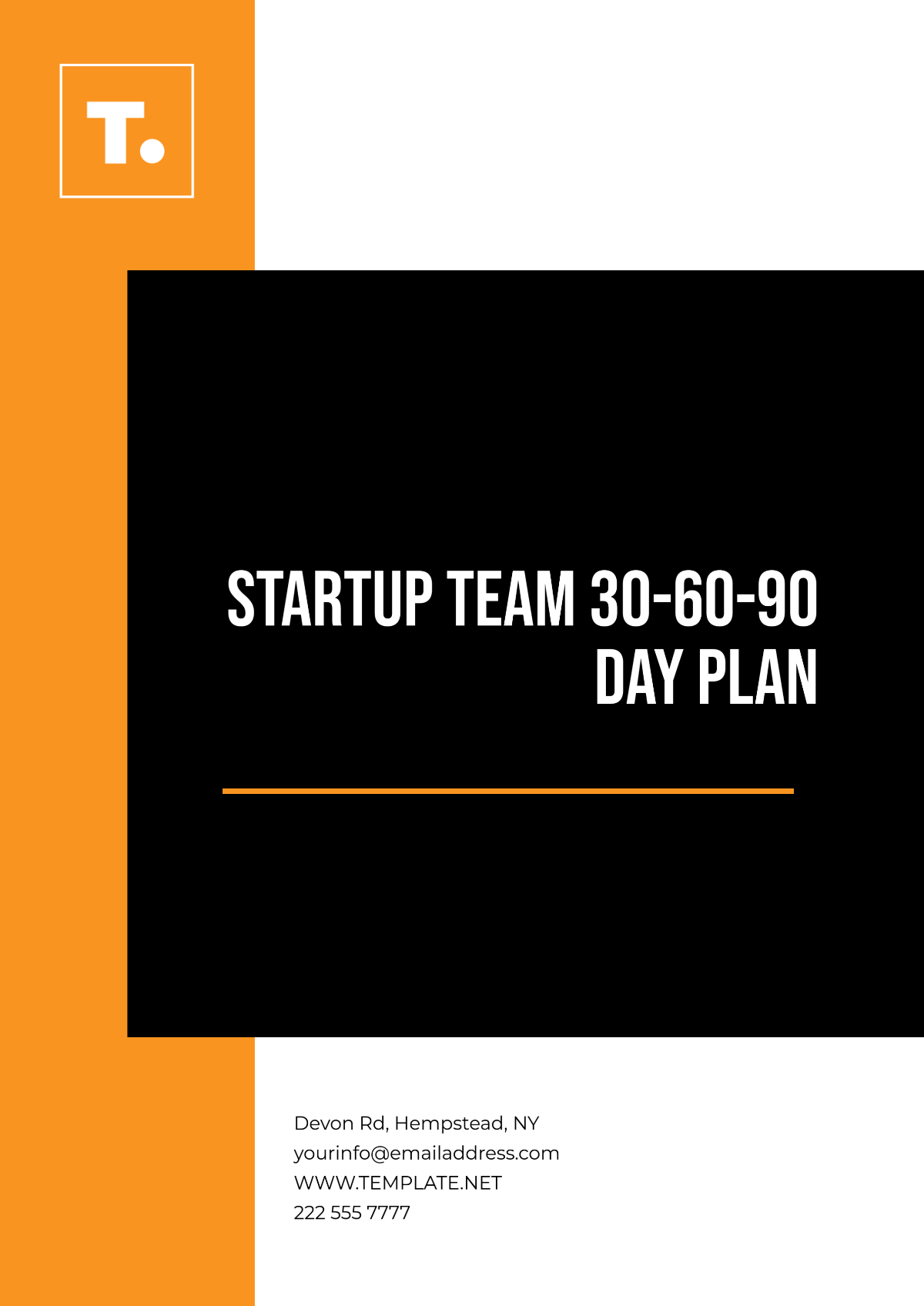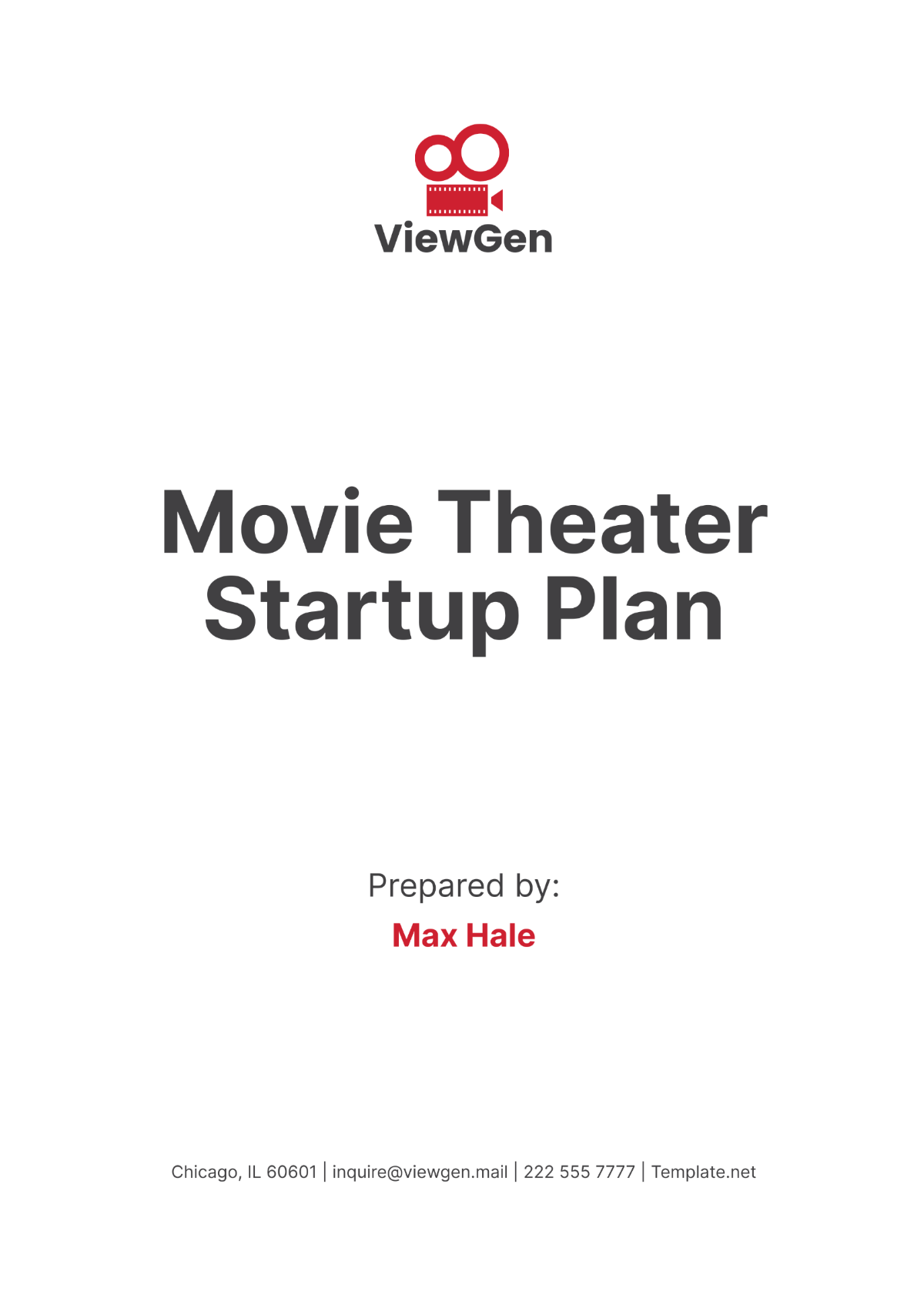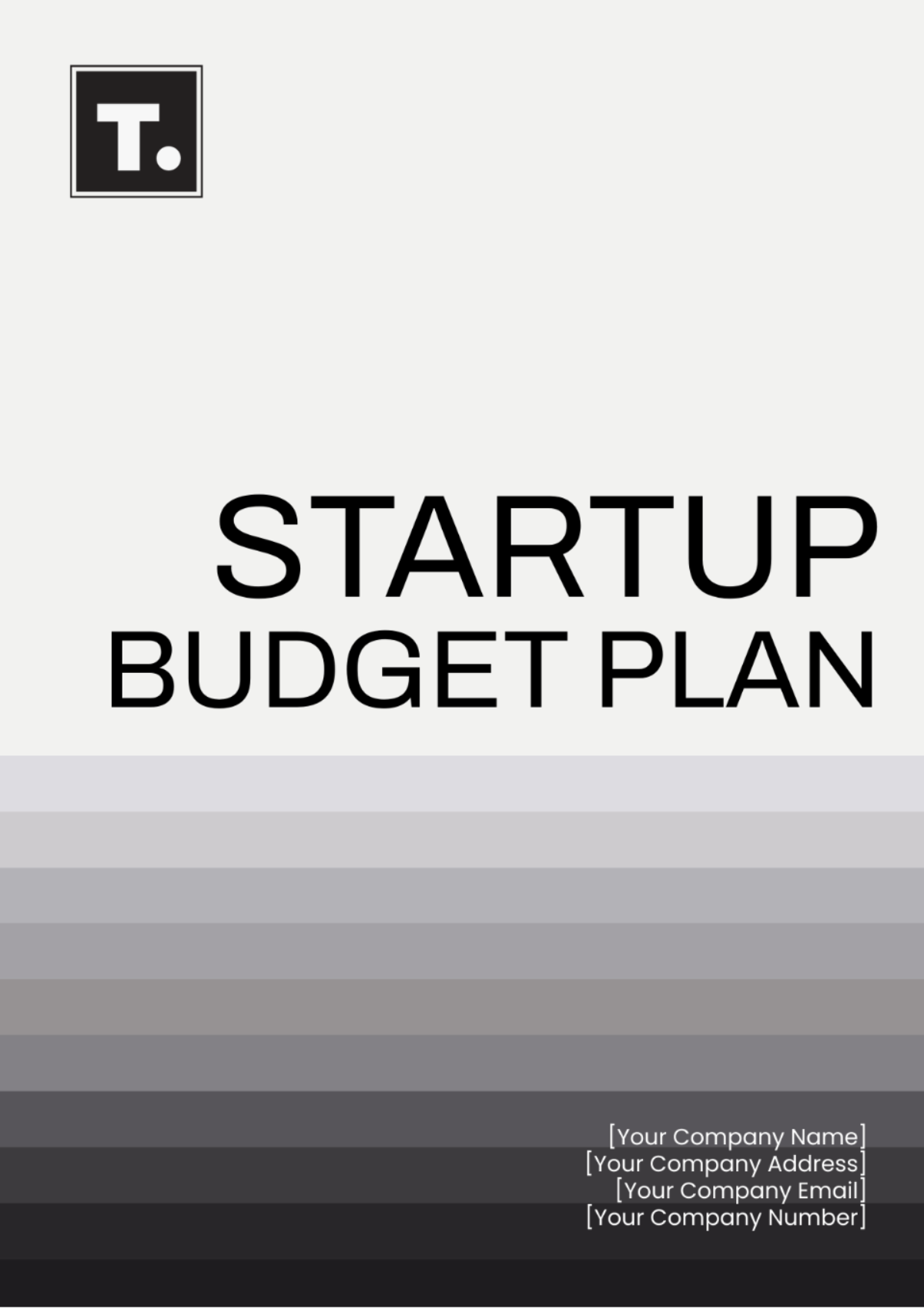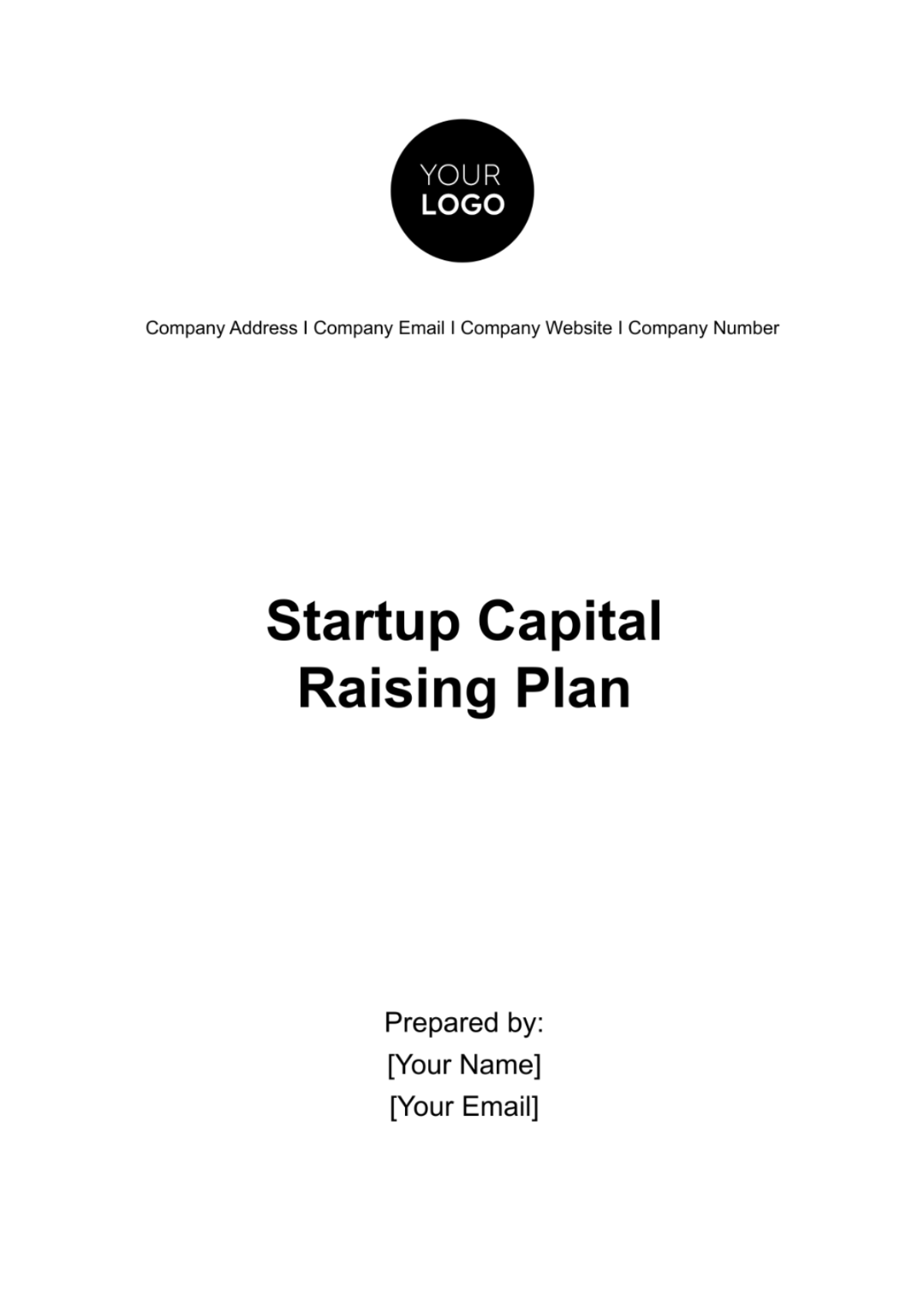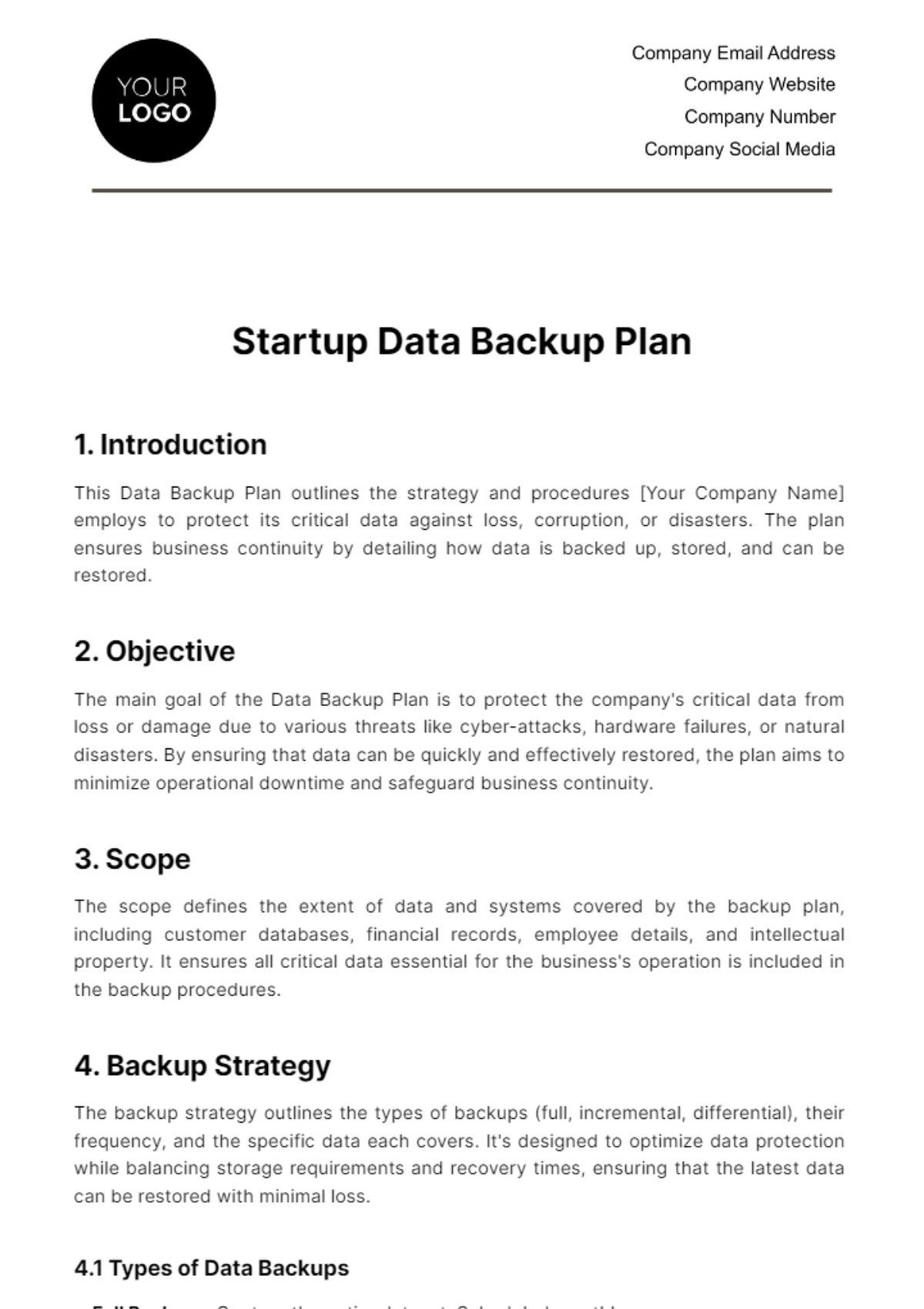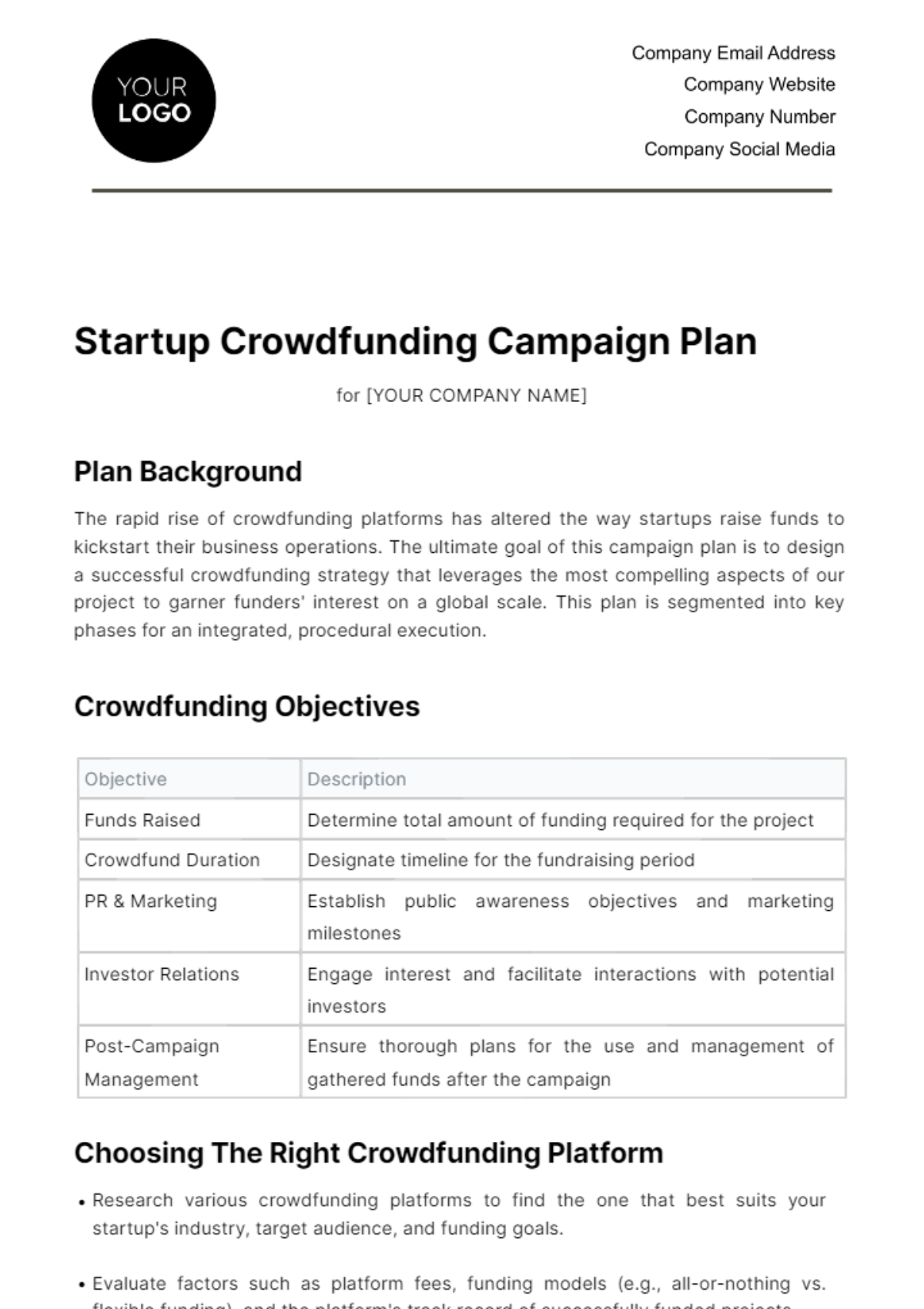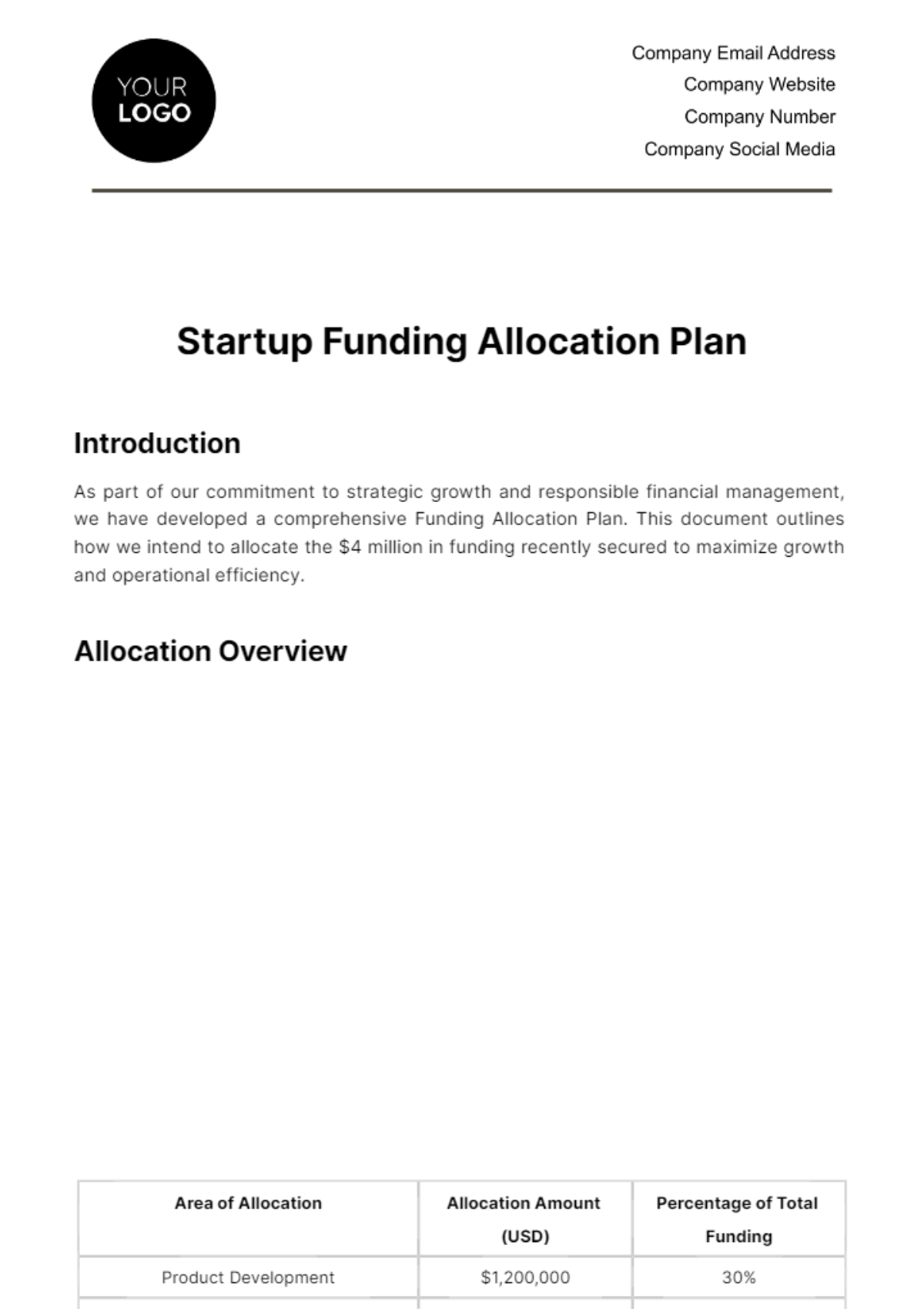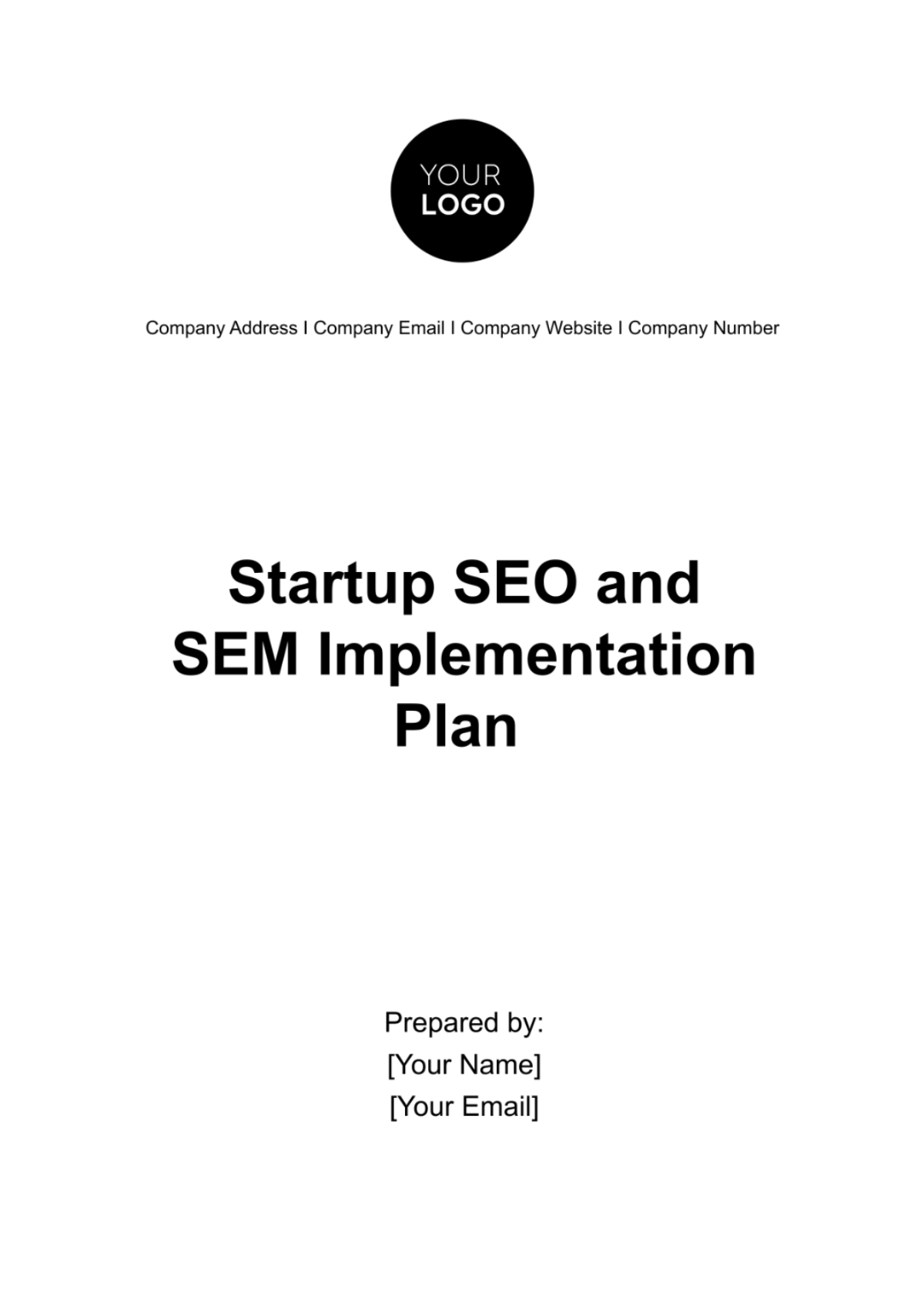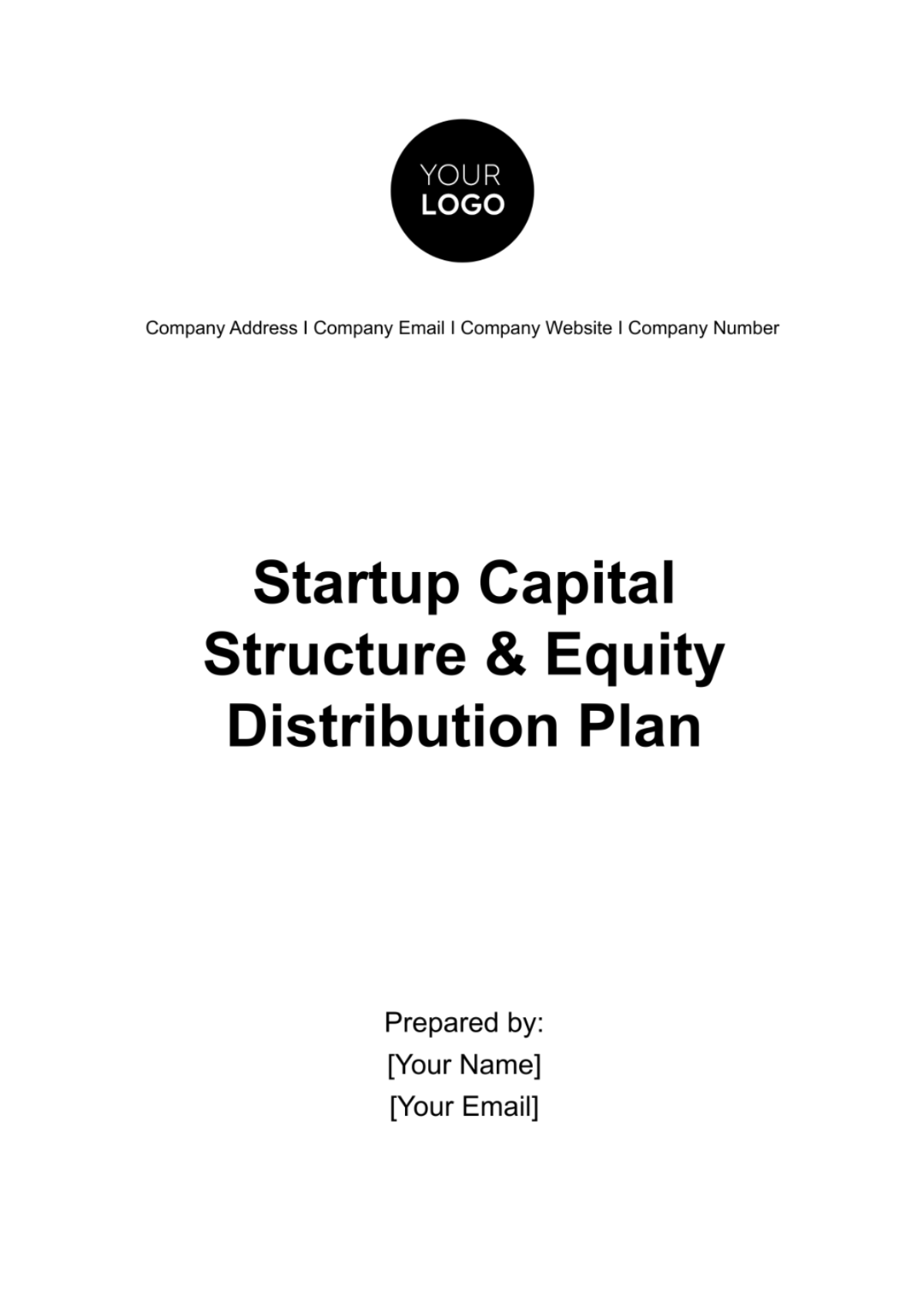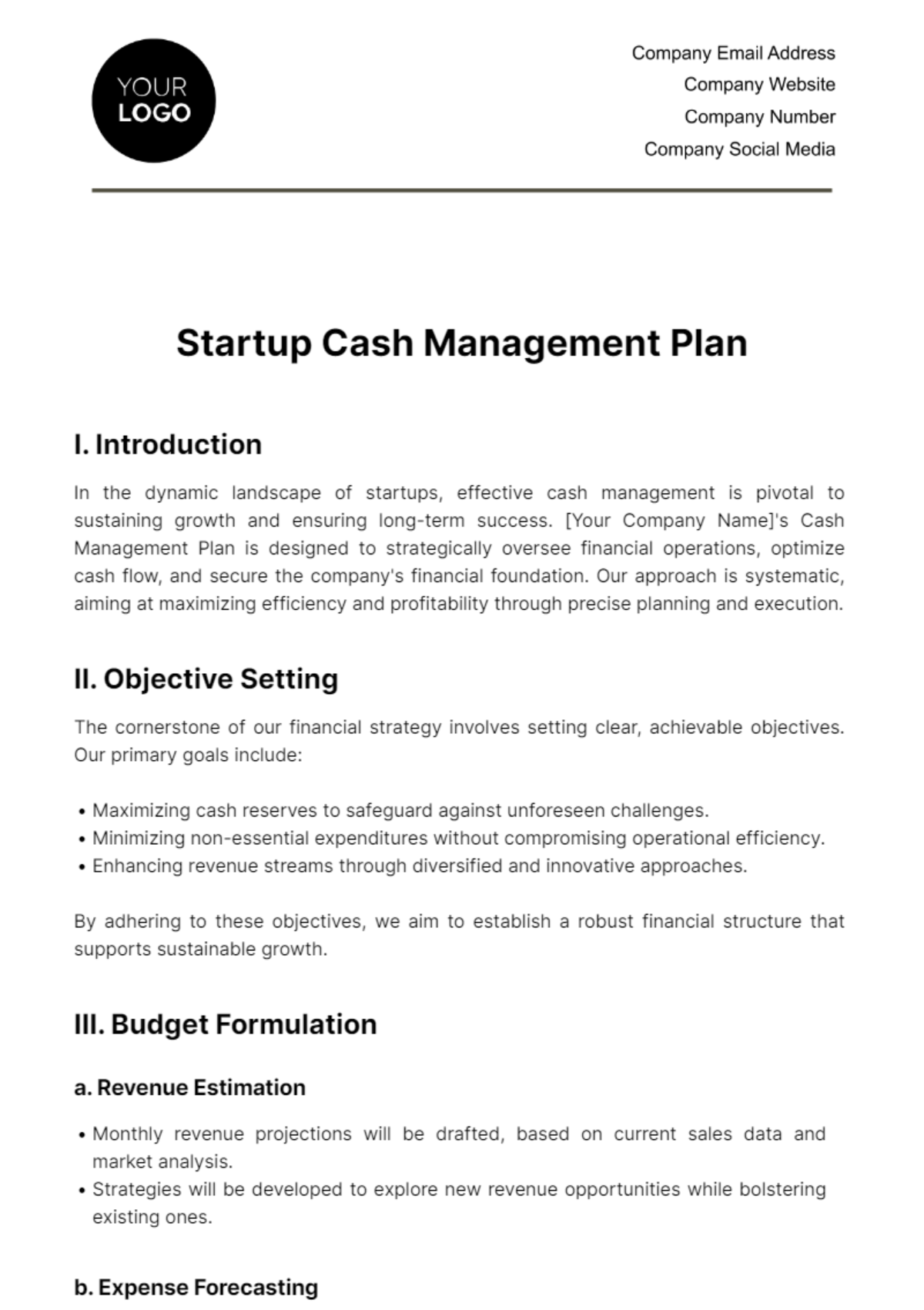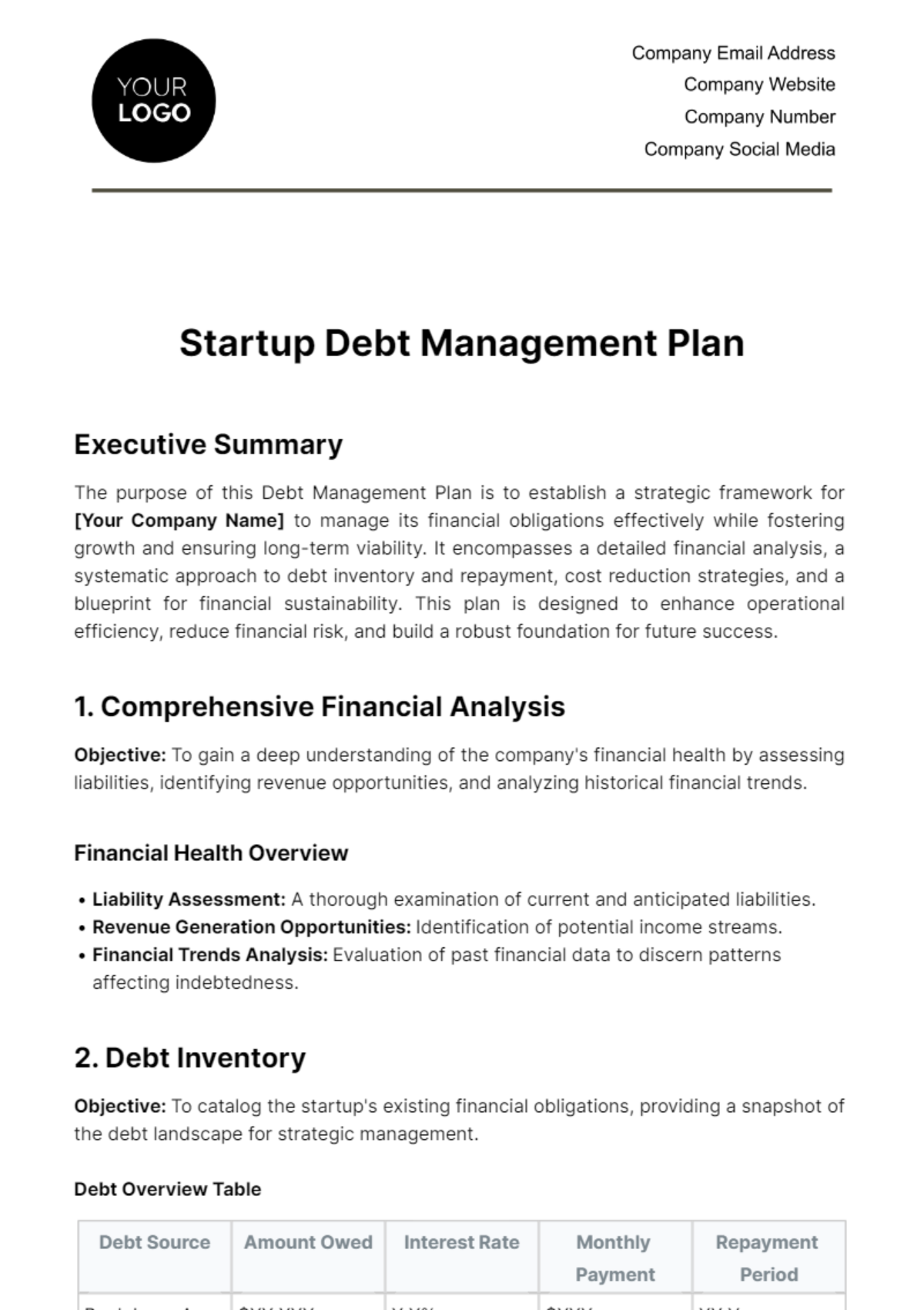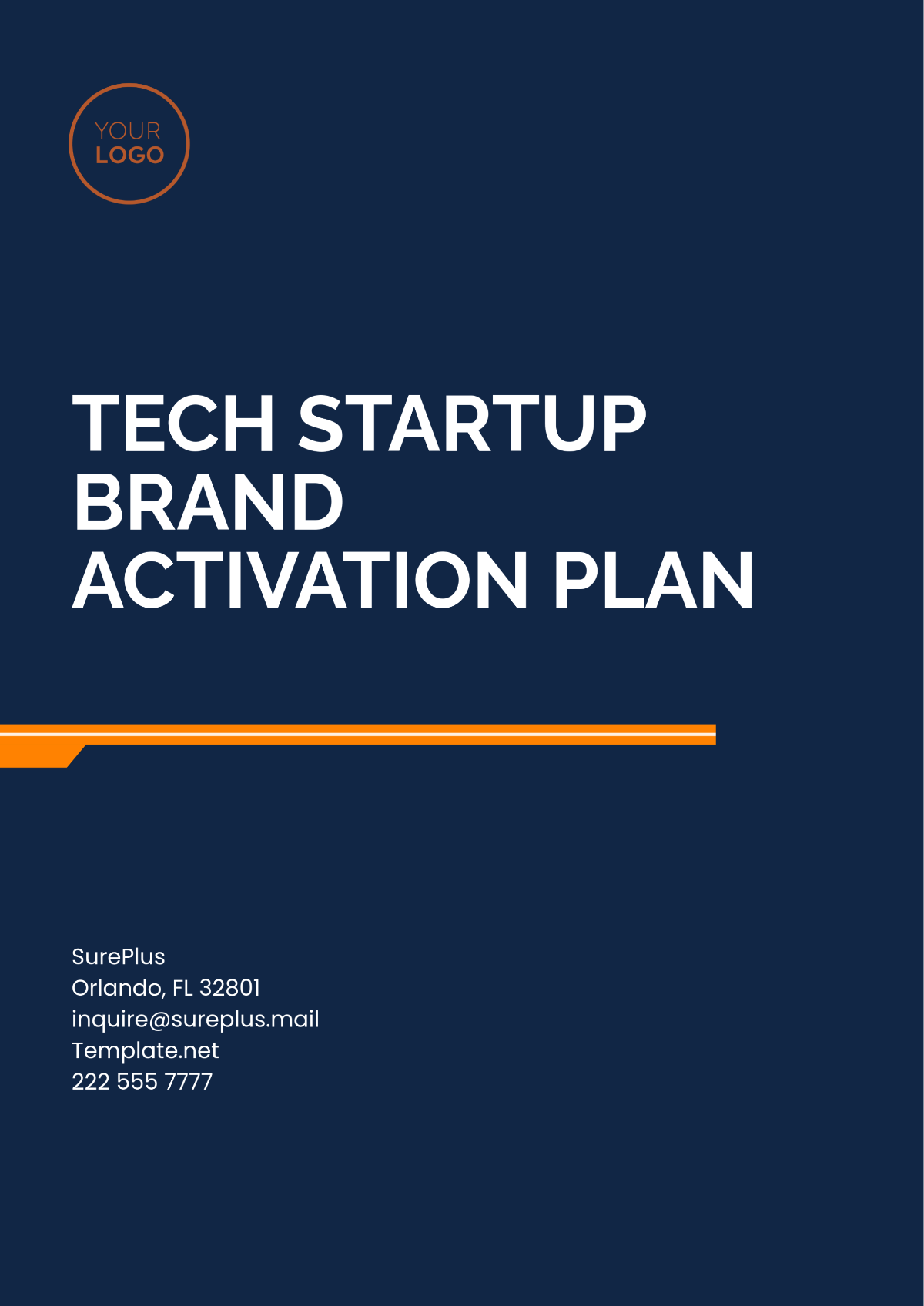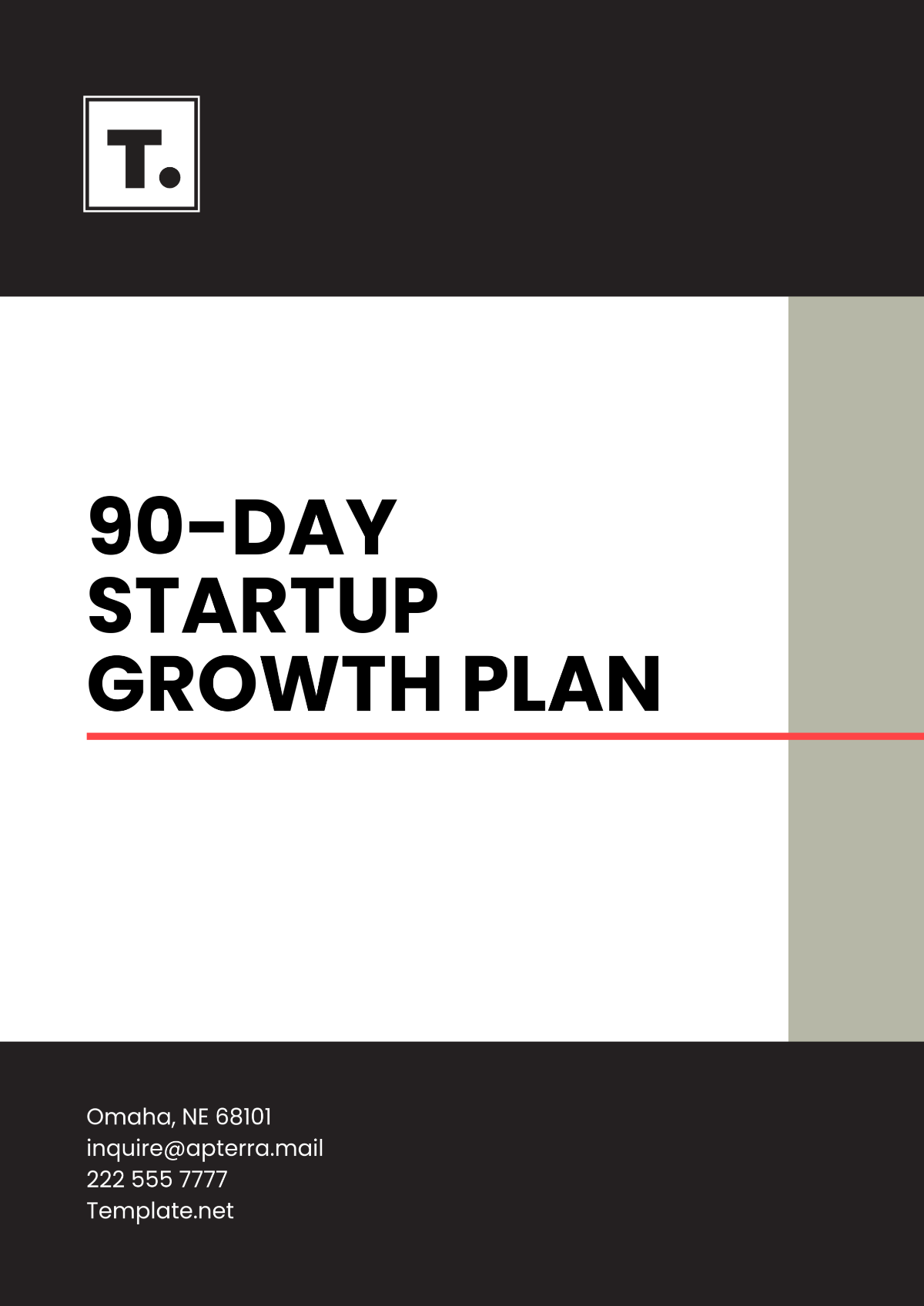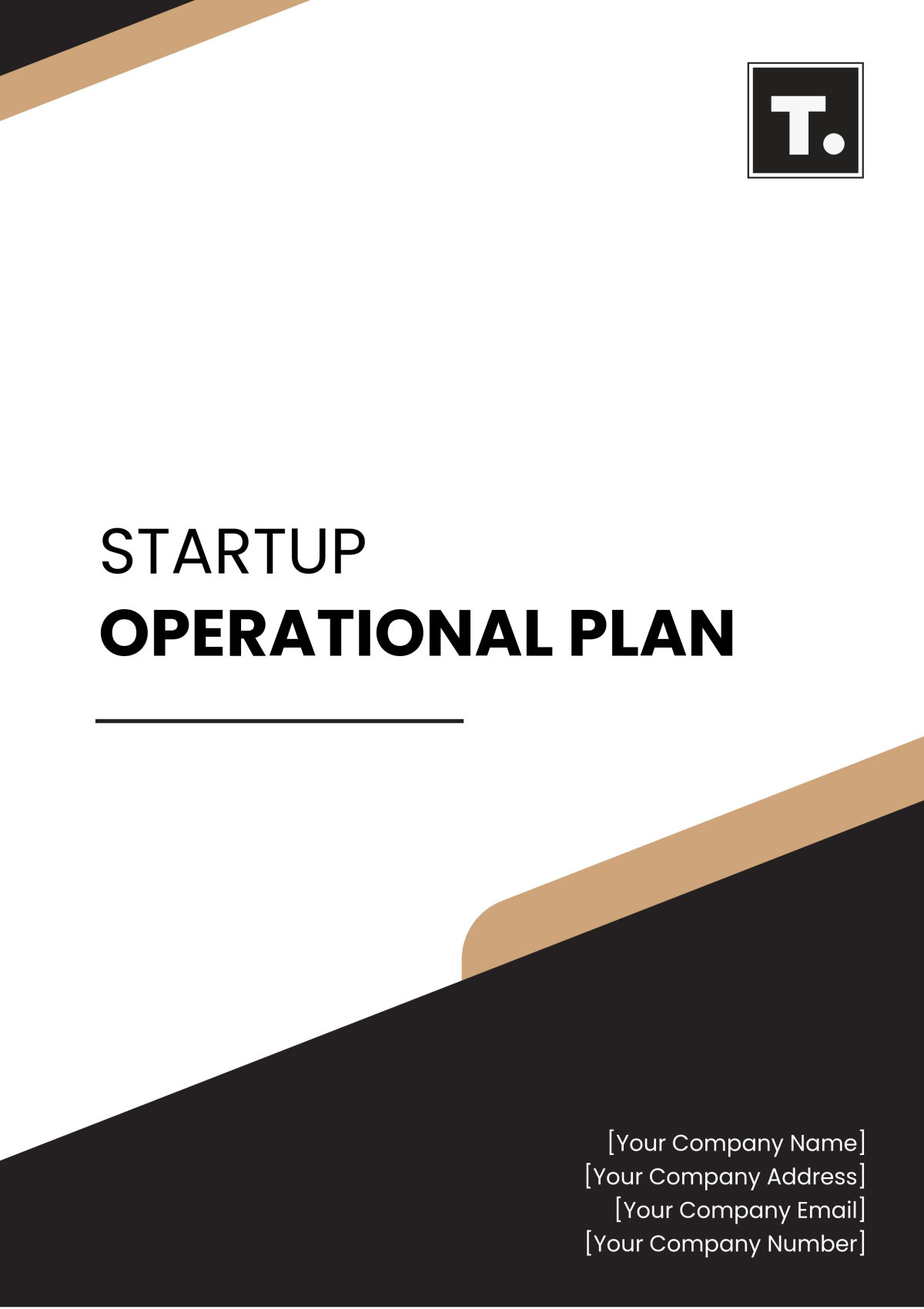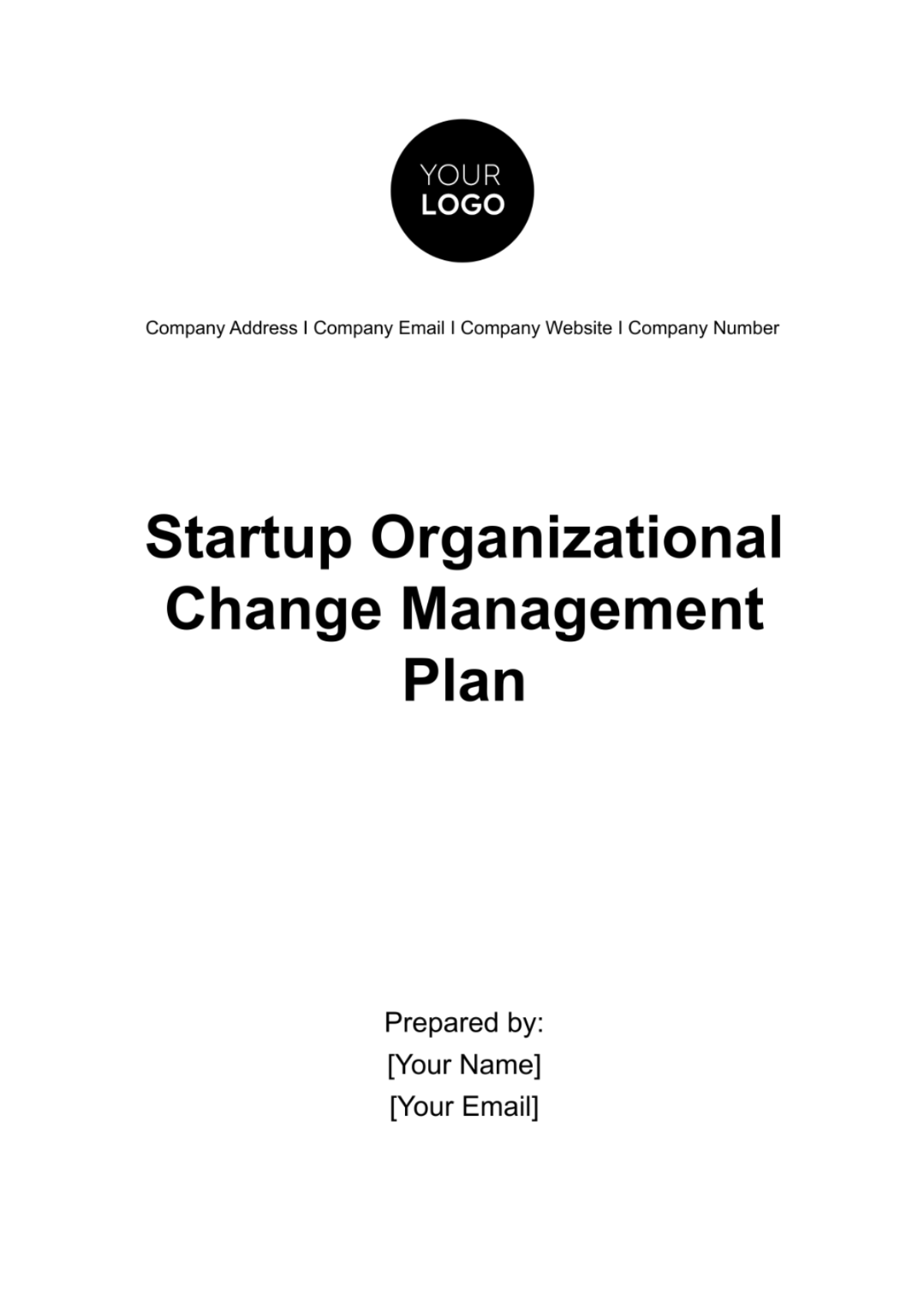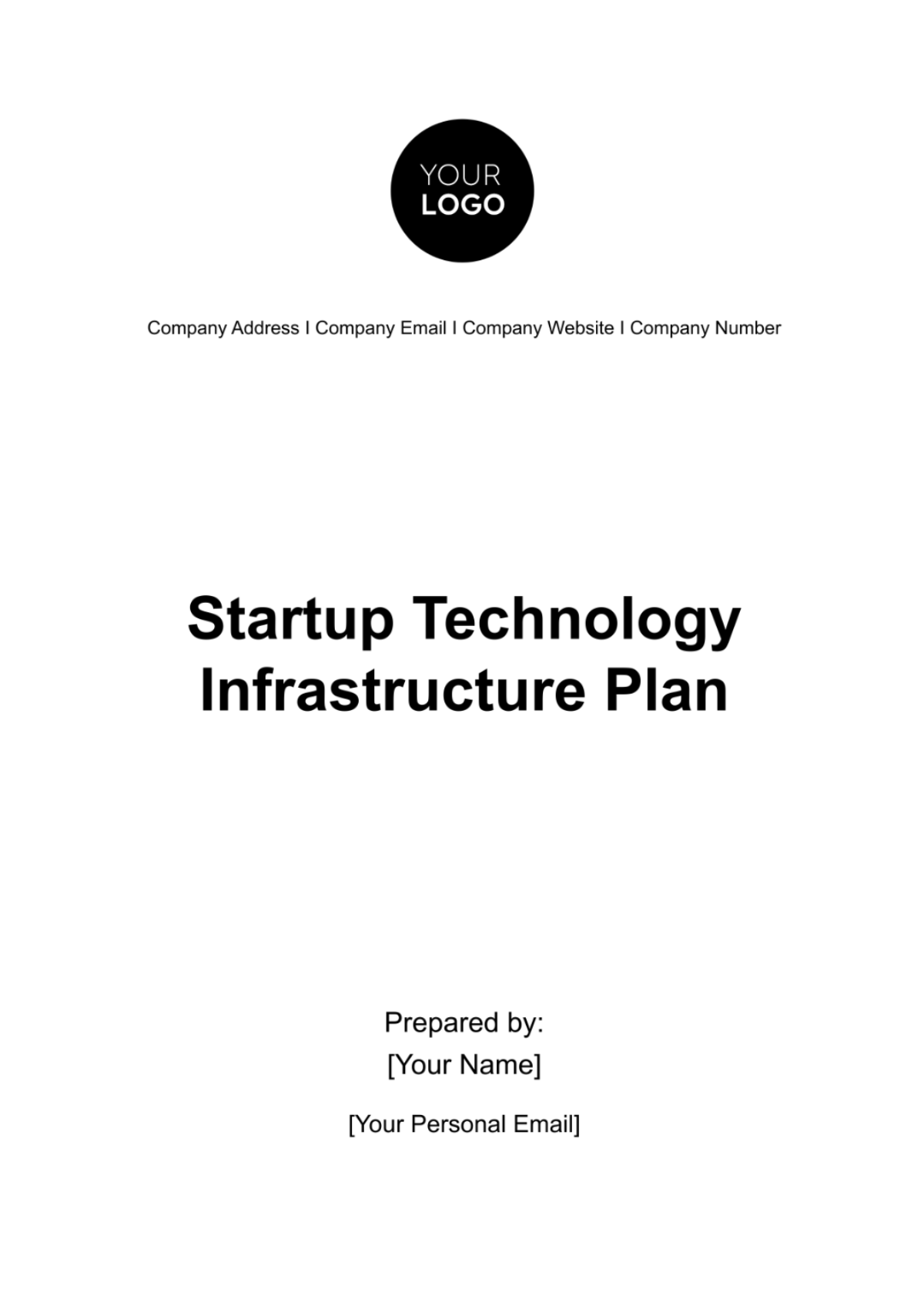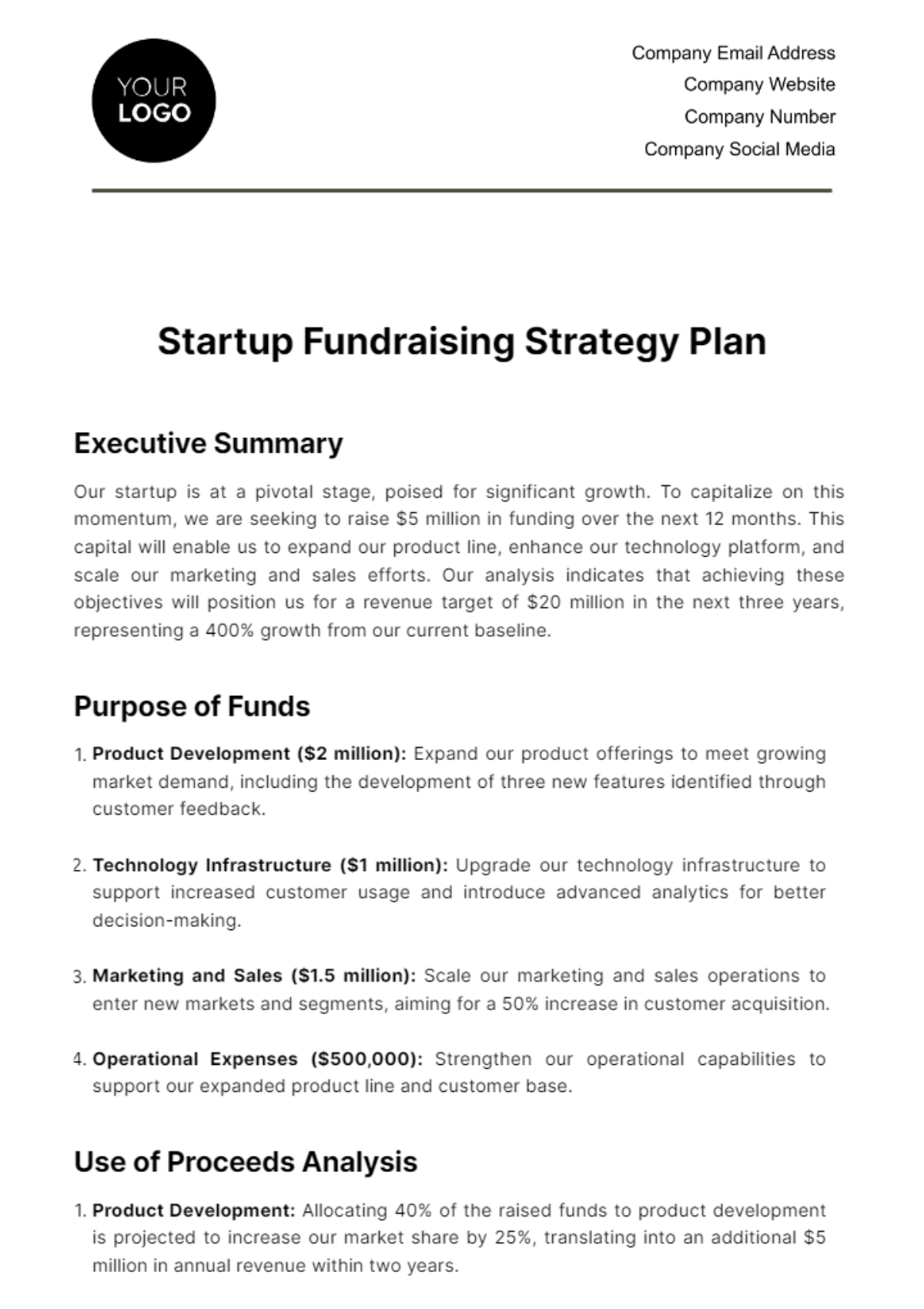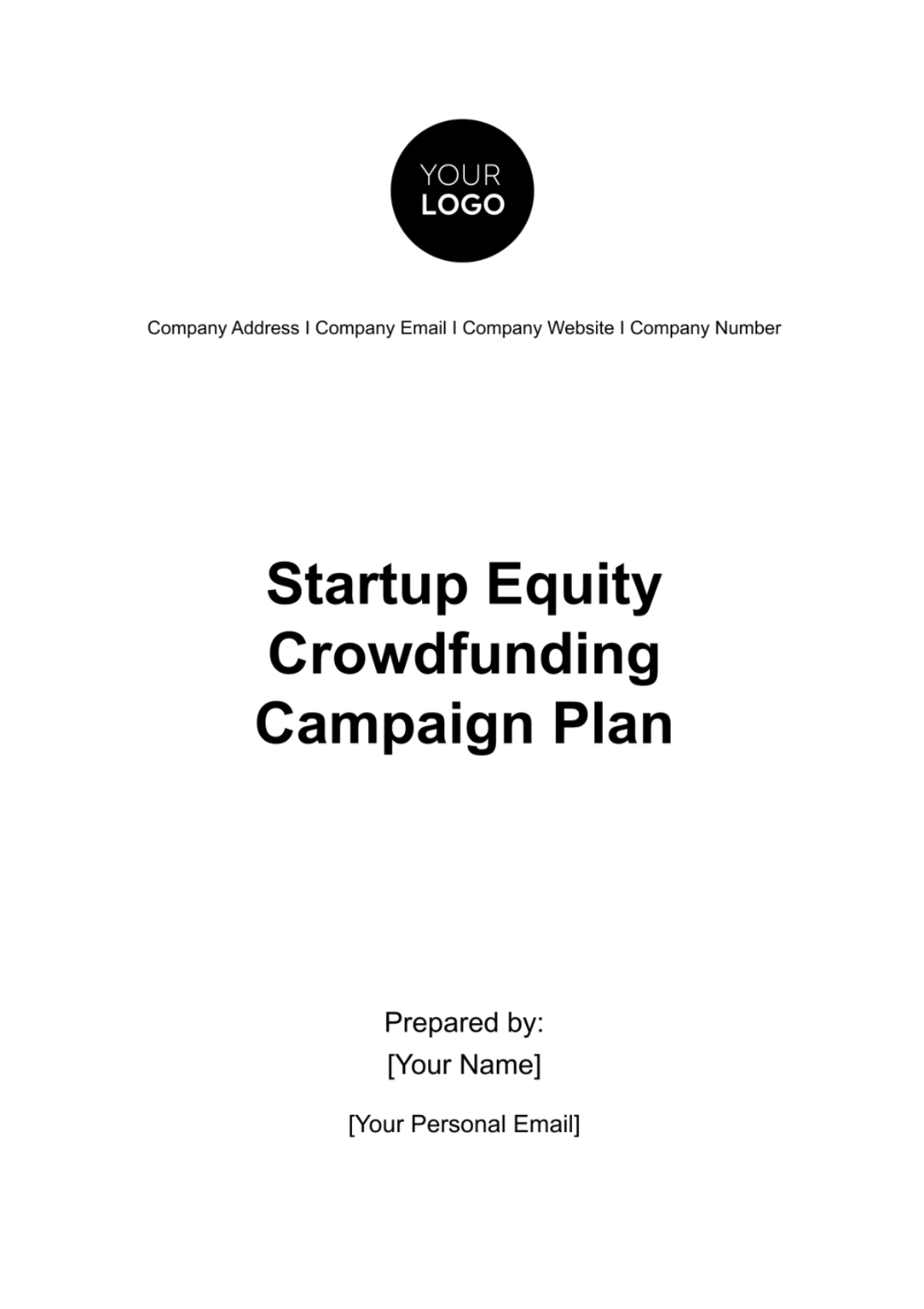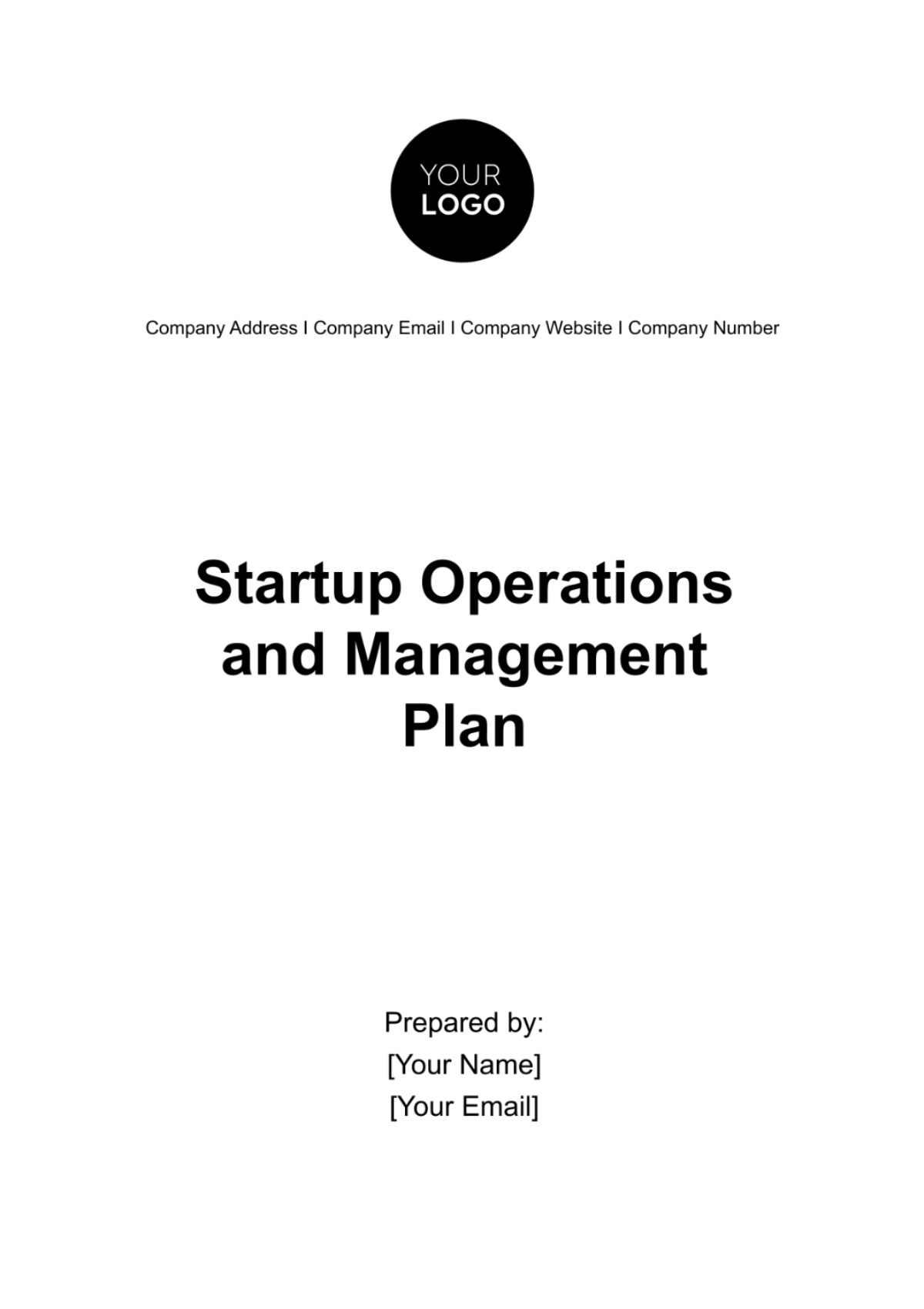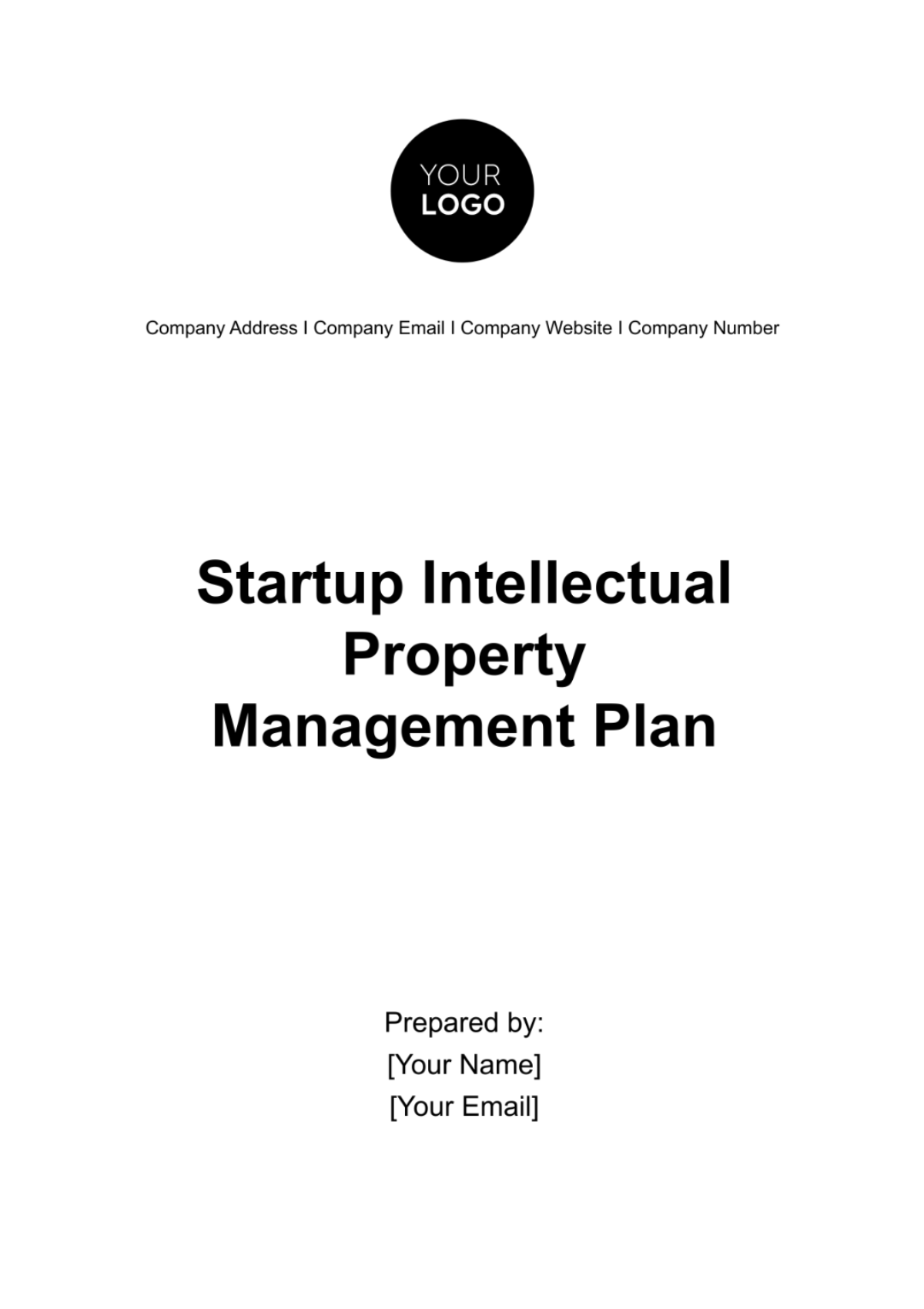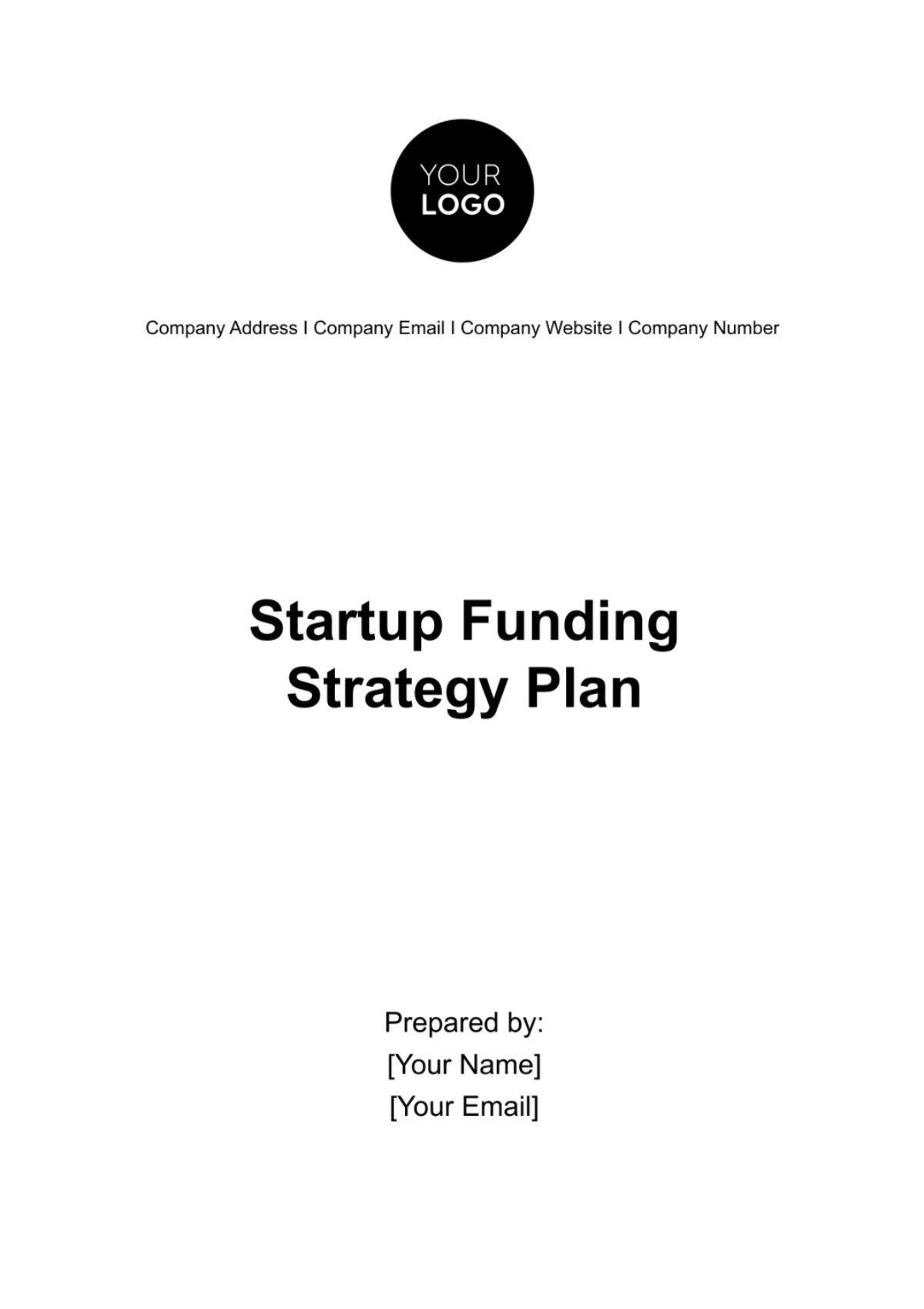Startup Operations and Management Plan
Executive Summary
In an era defined by rapid technological advancement and shifting market demands, our startup is poised to carve out a significant niche in the [industry sector]. This Operations and Management Plan encapsulates our strategic approach to ensuring the smooth, efficient, and effective operation of our business. It outlines our organizational framework, operational processes, management strategies, and the systems that underpin our daily activities and long-term objectives. With an initial funding of $2 million, our goal for the first year is to achieve a revenue milestone of $5 million, while establishing a solid foundation for scalability and sustained growth. This plan serves as a roadmap for our journey towards becoming a leader in our industry, detailing the roles, responsibilities, and processes that will enable us to achieve our ambitious goals.
Organizational Structure
Our organizational structure is designed to be agile and responsive, facilitating rapid decision-making and fostering a culture of innovation and excellence. Below is an overview of our structure, highlighting the key roles and their responsibilities:
Role | Responsibilities |
CEO | Provides overall strategic direction, oversees company operations, and represents the company externally. |
CTO | Leads technology strategy, oversees product development and innovation, and manages IT infrastructure. |
CFO | Manages financial planning, risk management, record-keeping, and financial reporting. |
COO | Oversees day-to-day operations, supply chain management, and operational efficiency improvements. |
Head of Marketing | Develops and executes marketing strategies to drive sales, brand awareness, and market penetration. |
Head of Sales | Leads sales strategies, manages sales team, and develops key customer relationships. |
HR Manager | Oversees recruitment, staff development, and retention strategies, and ensures workplace compliance. |
Product Manager(s) | Manages product lifecycle from concept to market, gathering customer feedback, and iterating on development. |
Product or Service Development
At the heart of our startup is a commitment to innovation and quality in our product and service offerings. Our development process is iterative, customer-focused, and data-driven, ensuring that we not only meet but exceed market expectations. Starting with market research, we identify customer needs and trends to inform our product ideation phase. Prototyping follows, with rigorous testing to refine the product based on feedback. Finally, we proceed to product launch, supported by strategic marketing campaigns. Throughout this process, cross-functional teams from design, engineering, and marketing collaborate closely, ensuring a cohesive approach to product development.
Processes
Market Research: Identify customer needs and market gaps.
Ideation: Brainstorming sessions to generate innovative ideas.
Design and Prototyping: Develop prototypes for internal and external testing.
Feedback: Collect feedback from test users and iterate on the design.
Final Development: Finalize the product design for manufacturing.
Launch Preparation: Prepare marketing materials and launch strategies.
Product Launch: Officially introduce the product to the market.
Supply Chain Management
Our supply chain is structured to be resilient, efficient, and capable of supporting our ambitious growth targets. We have established relationships with a select group of suppliers known for their quality, reliability, and ethical practices. Our strategic partnerships ensure a steady supply of materials essential for our production, minimizing risks related to supply chain disruptions.
Suppliers
Supplier Name | Material/Service Provided | Location | Reliability Rating |
Raw materials for production | High | ||
Specialized electronic parts | Very High | ||
Logistics and transportation | High | ||
Packaging materials | Moderate |
Our inventory management strategy employs a just-in-time (JIT) approach, reducing holding costs and ensuring materials are fresh and production is lean. We continuously monitor our supply chain performance, using data analytics to predict demand patterns and adjust our inventory levels accordingly. This dynamic approach allows us to be agile in responding to market changes and customer demands, ensuring we maintain high levels of service while controlling costs.
Service Delivery Process
Delivering our services efficiently and effectively is paramount to our success and customer satisfaction. Our service delivery process begins with a thorough consultation to understand the client's needs fully. Customized solutions are then designed by our expert team, focusing on delivering maximum value and addressing the specific challenges identified. Implementation follows, with our team working closely with the client to ensure seamless integration into their operations. Post-implementation, we provide comprehensive support and maintenance, ensuring any issues are promptly addressed and the service continues to meet the client's evolving needs.
Training sessions for clients, detailed documentation, and accessible customer support ensure that clients can fully leverage the benefits of our services. Regular follow-ups and feedback mechanisms are in place to gather insights and continuously improve our offerings. This customer-centric approach underpins our service delivery process, ensuring we build long-term relationships with our clients based on trust, quality, and reliability.
Facilities and Equipment
Our operational efficiency is significantly supported by strategically located facilities and state-of-the-art equipment. Our headquarters, situated in [City, Country], is designed to foster innovation and collaboration among our team members. Additionally, we operate a manufacturing facility in [City, Country], equipped with advanced machinery for production. A distribution center located in [City, Country] enables us to efficiently manage logistics and supply chain operations, ensuring timely delivery to our customers.
Physical Locations
Headquarters: [Address], [City], [Country] – Central hub for strategy, design, and administration.
Manufacturing Facility: [Address], [City], [Country] – Houses production lines and quality control.
Distribution Center: [Address], [City], [Country] – Manages inventory and fulfills orders.
Technology Needs
Enterprise Resource Planning (ERP) System: Integrates core business processes for real-time management and decision-making.
Customer Relationship Management (CRM) Software: To manage interactions with current and potential customers, enhancing customer relationships and retention.
Product Design Software: Advanced tools for our design team to create and test product prototypes.
Cybersecurity Solutions: To protect sensitive data and ensure business continuity.
Quality Assurance Processes
Quality assurance is paramount to our mission of delivering excellence in every product and service. Our comprehensive QA processes are embedded throughout the product lifecycle, ensuring that quality standards are met consistently.
Measures
Regular Audits and Inspections: Routine checks at various stages of production to identify and rectify potential quality issues.
Customer Feedback Loops: Gathering and analyzing customer feedback to continuously improve product quality and customer satisfaction.
Supplier Quality Management: Rigorous assessment and monitoring of suppliers to ensure materials meet our quality standards.
Employee Training: Ongoing training programs for employees to stay updated on quality control best practices and techniques.
Management Team
Our management team combines strategic vision, deep industry knowledge, and a passion for innovation, driving our startup towards achieving its goals.
Name | Experience | Skills | Role |
15 years in [industry] | Strategic planning, leadership | Chief Executive Officer | |
10 years in technology development | Product development, innovation | Chief Technology Officer | |
12 years in financial management | Financial strategy, risk management | Chief Financial Officer | |
8 years in operations | Supply chain management, efficiency | Chief Operating Officer | |
10 years in marketing | Brand strategy, customer acquisition | Chief Marketing Officer |
Staffing Plan
As we navigate through our growth phase, a strategic staffing plan is essential to ensure we have the right talent in place to meet our objectives. Our plan identifies the need to expand our team in key areas to support product development, sales and marketing, and customer support. We are committed to attracting top talent who share our vision and values, ensuring a dynamic and innovative workplace culture.
Hiring Timelines
Role | Department | Q1 | Q2 | Q3 | Q4 |
Product Developer | Product Development | 2 | 3 | 1 | 2 |
Sales Associate | Sales | 1 | 2 | 2 | 3 |
Marketing Specialist | Marketing | 1 | 2 | ||
Customer Support Representative | Customer Support | 2 | 3 |
*Note: Numbers indicate the quantity of positions planned to be filled in each quarter.
Training and Development
Investing in our employees through training and development is a cornerstone of our strategy to maintain a competitive edge. We offer a variety of training programs aimed at enhancing skills, fostering leadership, and promoting innovation among our team. By continuously developing our workforce, we ensure our team is equipped to meet the challenges of our industry and contribute to our long-term success.
Programs
Program Name | Target Audience | Duration |
Leadership Development | Mid-level Managers | 6 weeks |
Technical Skills Enhancement | Product Development Team | 4 weeks |
Sales and Marketing Mastery | Sales and Marketing Teams | 3 weeks |
Customer Excellence Training | Customer Support Staff | 2 weeks |
Compensation and Incentives
Our compensation and incentives package is designed to attract, retain, and motivate employees, reflecting our commitment to recognizing and rewarding their contributions. We offer competitive salaries, comprehensive benefits, and performance-based incentives, aligning employee success with our corporate goals.
Role | Base Salary Range | Benefits | Incentives |
Product Developer | $70,000 - $90,000 | Health, Dental, Vision, 401(k) | Stock Options, Bonuses |
Sales Associate | $50,000 - $65,000 | Health, Dental, Vision, 401(k) | Commission, Quarterly Bonuses |
Marketing Specialist | $55,000 - $75,000 | Health, Dental, Vision, 401(k) | Performance Bonuses |
Customer Support Representative | $40,000 - $55,000 | Health, Dental, Vision, 401(k) | Annual Bonuses |
Legal and Regulatory Compliance
Ensuring compliance with applicable laws and regulations is a fundamental aspect of our business operations. We are committed to upholding the highest standards of legal and regulatory compliance to mitigate risks and maintain the trust of our stakeholders. Our compliance efforts encompass a thorough understanding of relevant US laws and regulations, allowing us to navigate complex legal landscapes effectively.
Relevant US Laws and Regulations
Law/Regulation | Description |
Americans with Disabilities Act (ADA) | Ensures equal opportunities for individuals with disabilities. |
Fair Labor Standards Act (FLSA) | Establishes minimum wage, overtime pay, and child labor standards. |
Health Insurance Portability and Accountability Act (HIPAA) | Protects the privacy and security of health information. |
Occupational Safety and Health Act (OSHA) | Ensures safe and healthy working conditions for employees. |
Risk Management
Identifying, assessing, and mitigating risks is integral to our business strategy. By proactively managing risks, we aim to protect our assets, reputation, and stakeholders' interests. Our risk management approach involves systematically identifying potential risks, assessing their likelihood and impact, and implementing measures to mitigate or eliminate them.
Risk | Likelihood (1-5) | Impact (1-5) | Mitigation Strategy |
Supply Chain Disruption | 4 | 5 | Diversify suppliers, maintain buffer inventory. |
Cybersecurity Breach | 3 | 4 | Implement robust security measures, regular audits. |
Regulatory Changes | 4 | 3 | Stay updated on regulatory developments, engage legal counsel. |
Performance Measurement
Measuring performance against key metrics is essential for evaluating our progress and identifying areas for improvement. We employ a range of metrics to track our performance across various aspects of our business, enabling data-driven decision-making and continuous improvement.
Metric | Measurement Period | Target Value |
Customer Satisfaction | Quarterly | 90% satisfaction |
Revenue Growth | Annual | 20% growth |
Employee Engagement | Bi-annual | 85% engagement |
Productivity | Monthly | 95% efficiency |
Continuous improvement is ingrained in our culture, with regular reviews and analysis of performance metrics. We actively seek feedback from stakeholders, conduct post-implementation reviews, and invest in training and development programs to enhance skills and capabilities. By embracing a culture of continuous improvement, we ensure that we remain agile, responsive, and competitive in a dynamic business environment.
Financial Management and Controls
Sound financial management practices are the bedrock of our business operations, ensuring the efficient allocation of resources and safeguarding our financial integrity. We adhere to stringent controls and procedures to manage our finances effectively and mitigate risks. Our financial management practices encompass budgeting, accounting, financial reporting, and internal controls.
Financial Management Practices
Budgeting: We develop comprehensive budgets to plan and allocate resources effectively, aligning expenditures with strategic priorities and revenue projections.
Accounting: Our accounting practices follow Generally Accepted Accounting Principles (GAAP), ensuring accuracy and transparency in financial reporting.
Financial Reporting: We produce regular financial statements, including income statements, balance sheets, and cash flow statements, to provide stakeholders with timely and accurate information on our financial performance.
Internal Controls: Robust internal controls are in place to safeguard assets, prevent fraud, and ensure compliance with regulatory requirements.
Future Growth and Scalability
As we look to the future, our focus is on sustainable growth and scalability, positioning our business for long-term success and resilience in a dynamic market environment. To achieve this, we have developed strategies aimed at expanding our market reach, diversifying our product offerings, and optimizing our operations.
1. Market Expansion
We will explore opportunities to enter new geographic markets or target new customer segments to broaden our customer base and revenue streams. Market research and strategic partnerships will inform our expansion strategy, ensuring we capitalize on emerging trends and customer needs.
2. Product Diversification
In addition to expanding our market reach, we will invest in developing new products or services to meet evolving customer demands and stay ahead of competitors. Innovation and customer feedback will drive our product development efforts, allowing us to offer a diverse portfolio of solutions.
3. Operational Optimization
To support our growth ambitions, we will focus on optimizing our operations for efficiency and scalability. This includes streamlining processes, investing in technology and automation, and enhancing supply chain management to reduce costs and improve productivity.
4. Strategic Partnerships
Collaborating with strategic partners, such as suppliers, distributors, or complementary businesses, will enable us to leverage their expertise and resources to accelerate our growth. Strategic alliances can also provide access to new markets, technologies, or distribution channels.

